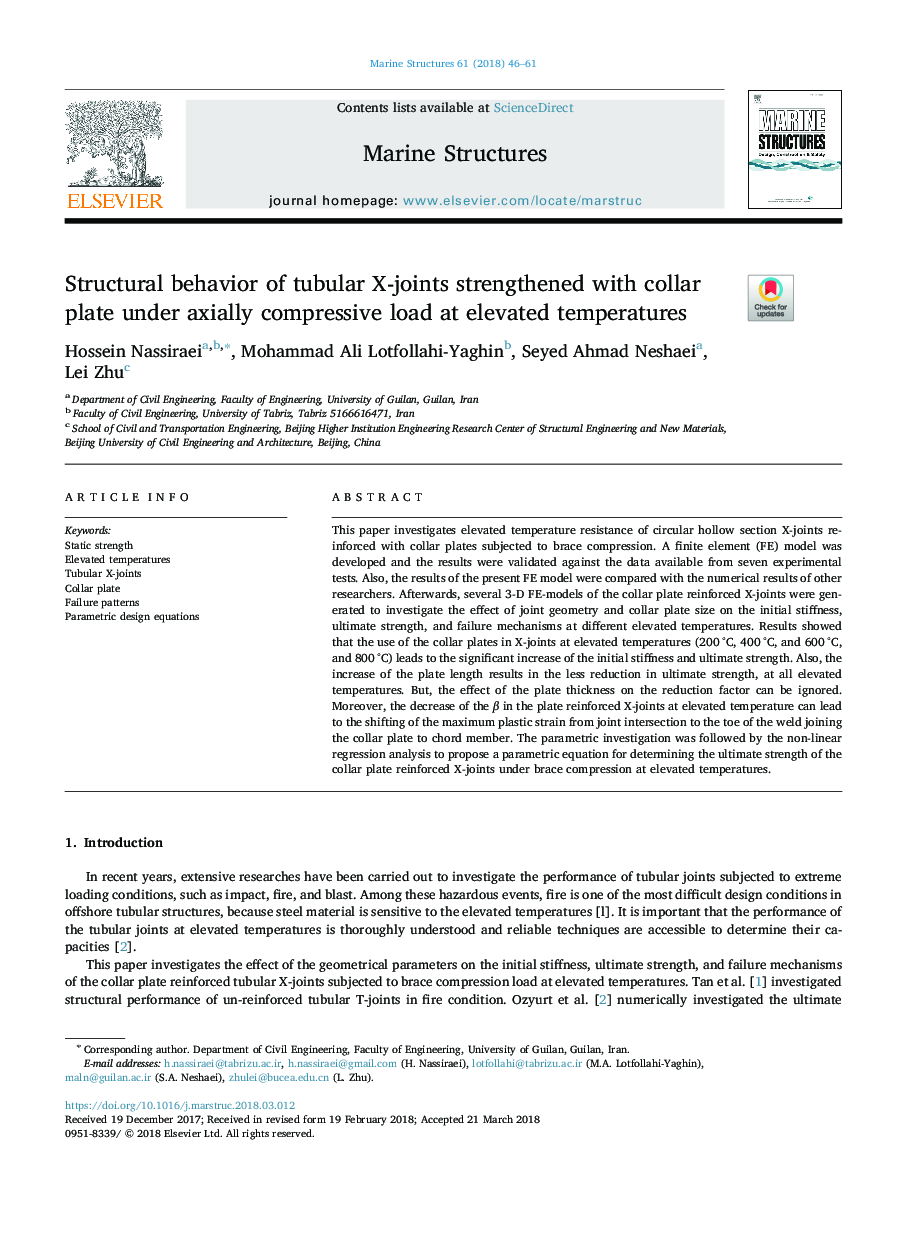| Article ID | Journal | Published Year | Pages | File Type |
|---|---|---|---|---|
| 6757866 | Marine Structures | 2018 | 16 Pages |
Abstract
This paper investigates elevated temperature resistance of circular hollow section X-joints reinforced with collar plates subjected to brace compression. A finite element (FE) model was developed and the results were validated against the data available from seven experimental tests. Also, the results of the present FE model were compared with the numerical results of other researchers. Afterwards, several 3-D FE-models of the collar plate reinforced X-joints were generated to investigate the effect of joint geometry and collar plate size on the initial stiffness, ultimate strength, and failure mechanisms at different elevated temperatures. Results showed that the use of the collar plates in X-joints at elevated temperatures (200â¯Â°C, 400â¯Â°C, and 600â¯Â°C, and 800â¯Â°C) leads to the significant increase of the initial stiffness and ultimate strength. Also, the increase of the plate length results in the less reduction in ultimate strength, at all elevated temperatures. But, the effect of the plate thickness on the reduction factor can be ignored. Moreover, the decrease of the β in the plate reinforced X-joints at elevated temperature can lead to the shifting of the maximum plastic strain from joint intersection to the toe of the weld joining the collar plate to chord member. The parametric investigation was followed by the non-linear regression analysis to propose a parametric equation for determining the ultimate strength of the collar plate reinforced X-joints under brace compression at elevated temperatures.
Related Topics
Physical Sciences and Engineering
Engineering
Civil and Structural Engineering
Authors
Hossein Nassiraei, Mohammad Ali Lotfollahi-Yaghin, Seyed Ahmad Neshaei, Lei Zhu,
